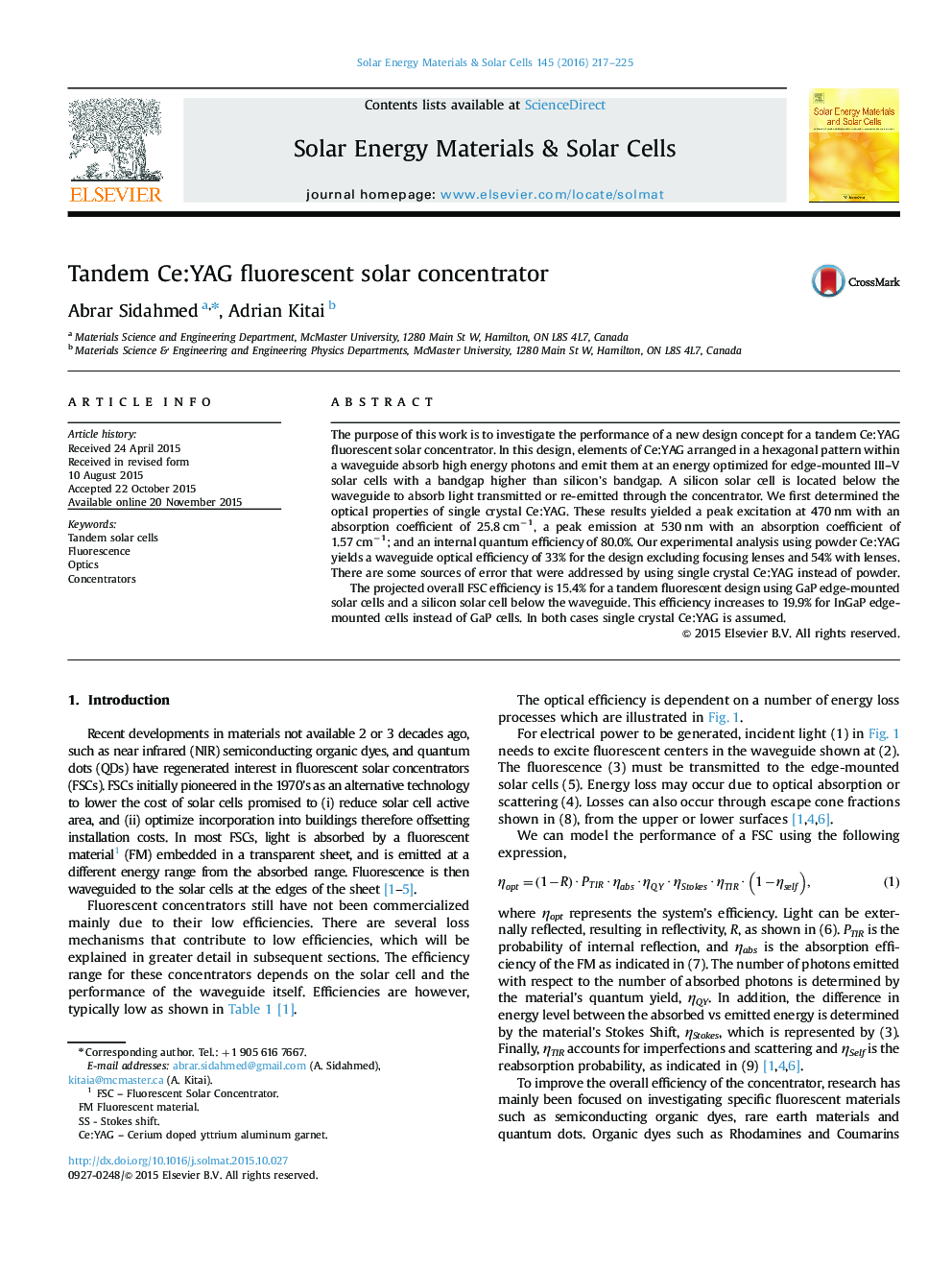| Article ID | Journal | Published Year | Pages | File Type |
|---|---|---|---|---|
| 77676 | Solar Energy Materials and Solar Cells | 2016 | 9 Pages |
•Ce:YAG is investigated as a fluorescent material in a FSC.•Ce:YAG exhibits a peak excitation at 470 nm and a peak emission at 530 nm.•α470 nm=25.8 cm−1 and α530 nm=1.57 cm−1 for Ce:YAG.•A new design is proposed to minimize cost and attenuation effect of FM.•ηFSC=15.4% for GaP and Si solar cells, ηFSC=19.9% for InGaP and Si solar cells.
The purpose of this work is to investigate the performance of a new design concept for a tandem Ce:YAG fluorescent solar concentrator. In this design, elements of Ce:YAG arranged in a hexagonal pattern within a waveguide absorb high energy photons and emit them at an energy optimized for edge-mounted III–V solar cells with a bandgap higher than silicon’s bandgap. A silicon solar cell is located below the waveguide to absorb light transmitted or re-emitted through the concentrator. We first determined the optical properties of single crystal Ce:YAG. These results yielded a peak excitation at 470 nm with an absorption coefficient of 25.8 cm−1, a peak emission at 530 nm with an absorption coefficient of 1.57 cm−1; and an internal quantum efficiency of 80.0%. Our experimental analysis using powder Ce:YAG yields a waveguide optical efficiency of 33% for the design excluding focusing lenses and 54% with lenses. There are some sources of error that were addressed by using single crystal Ce:YAG instead of powder.The projected overall FSC efficiency is 15.4% for a tandem fluorescent design using GaP edge-mounted solar cells and a silicon solar cell below the waveguide. This efficiency increases to 19.9% for InGaP edge-mounted cells instead of GaP cells. In both cases single crystal Ce:YAG is assumed.
